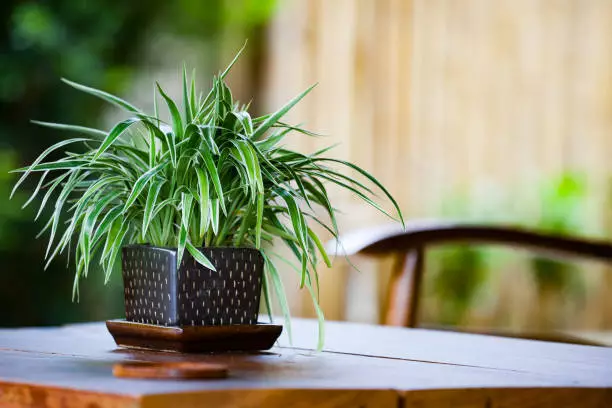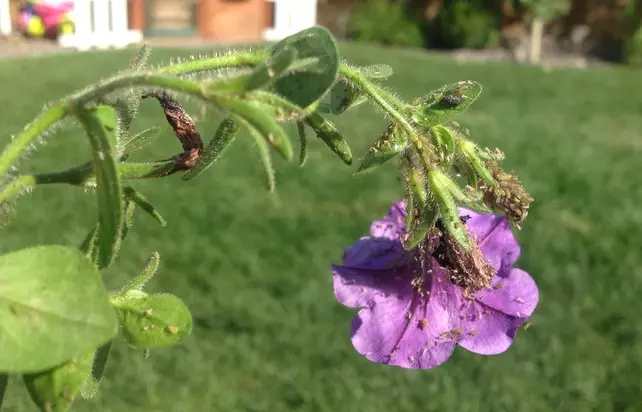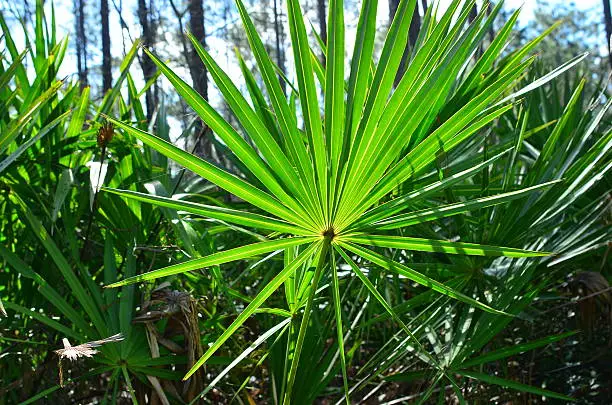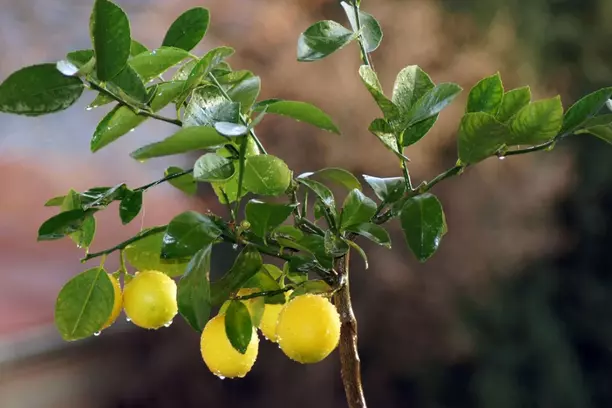Thrips are a pest that can negatively affect the overall health of your monstera. The insects are notorious for attacking healthy plants causing leaf discoloration, wilting, stunted growth, etc.
It’s crucial to deal with the insects as soon as you spot them. Several alternatives can help you overcome a thrip problem on your monstera. However, the best option is to prevent the insects from attacking your plants altogether.
Signs of thrips on monstera
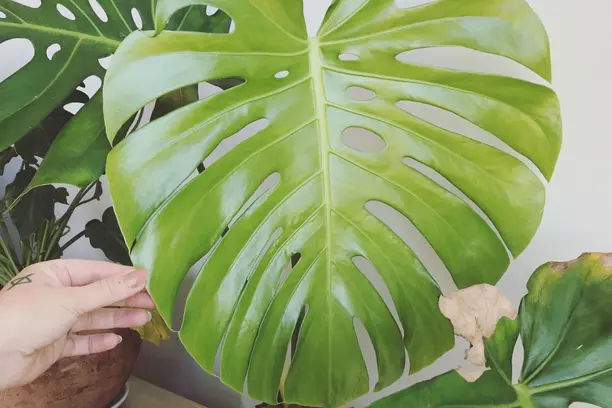
Thrips feed on plant sap by burrowing into your plant’s leaf and stalk veins. When left to breed unchecked, the insects can quickly decimate large plants, including monstera. Therefore, it’s crucial to keep thrip numbers under constant surveillance to prevent a thrip infestation among your plants.
Here are some of the critical indicators that thrips could be damaging your monster.
- Leaf Discoloration
- Presence of tiny bugs on the leaf underside/stalks
- Deformed growth
- Drooping/Wilting leaves
How to get rid of thrips on monstera
It’s advisable to act quickly to prevent the pests from spreading and causing substantial damage to your plants. You can start by conducting regular inspections on your plants with a particular focus on the plant’s leaves and stems where the pests are most likely to attack.
Here’s how to get rid of thrips on a monstera plant
1. Use a neem oil solution
Neem oil is an effective means of eradicating thrips from your monstera. The oil coats their bodies and interferes with their reproduction/feeding, which eventually kills and eliminates the troublesome pests from your plants.
A neem oil solution provinces an easy, cost-effective, and organic solution when dealing with thrips and other soft-bodied insects that regularly attack your monstera plants. However, you need to properly prepare the mixture before spraying it on the affected sections of your plants.
Here’s how to prepare neem oil solution for killing thrips and other pests from your plants:
- Pour one gallon of water into your mixing container.
- Add two teaspoons of concentrated cold-pressed neem oil to the mixing container. The water to oil ratio should be 1:2 (two teaspoons for every gallon of water).
- Add a few drops of dishwashing liquid or liquid soap and stir the mixture. The soap acts as a binding agent between the oil and water.
You can decide to add some essential oils or an Aloe Vera powder, although the product works just fine without the two additional effects. Once your concoction is ready, fill up your spraying bottle and spray copious amounts of the neem oil solution all over your monster.
Pay more attention to the underside of leaves, stalks, and other spots where the thrips cluster together. Repeat the treatment regularly until you are confident that the thrips have entirely disappeared.
2. Prune affected leaves
Pruning is a proven means of eradicating thrips from your plants. Monstera requires regular pruning to remove dead leaves and keep track of the plant’s growth pattern. In addition, you can decide to prune afflicted leaves/stalks to prevent the pests from spreading to other parts of the plant.
A downside to pruning is that it physically harms the plant and might not be a long-term solution to treating your monstera through thrip infestations. Besides, if the pests occupy considerable sections of your plant, it’s better to adopt other techniques.
3. Use a mild insecticide
Insecticides provide a highly effective method for eradicating thrip and other insects from your monstera. Although thrips are susceptible to systemic insecticides, regular insecticide application is a definite way to control the insect population and prevent thrip infestations on your monstera.
Spraying is a popular application method for insecticides. However, it’s best to adhere to manufacturers’ specifications regarding the ideal mixing ratios as different products may vary in concentration and application methods.
A downside to using insecticides relates to potential adverse effects to the soil/environment on continuous use. Therefore, it’s also advisable to adhere to safety procedures (such as wearing gloves, overalls, goggles, etc.) when dealing with potentially harmful chemical products.
4. Introduce ladybugs/predators
Ladybugs provide you with a biological option when dealing with thrips. The insects are natural predators to thrips and can be effective when looking for sustainable, cost-effective, and eco-friendly means of thrip elimination.
You can decide to purchase the predatory insects or attract them using ladybug flowers, minimal pesticide application, etc. The average budget for adult ladybugs is about $21.99 for 1500 ladybugs and approximately $49.99 for 4500 ladybugs (prices vary).
After acquiring the predatory insects, allow them to settle on the afflicted monstera plants for natural selection to occur. Although the process may take considerable time to achieve results, it can be ideal when dealing with mild infestations or preventative measures against future thrip attacks.
Ideally, you can also opt for pirate bugs that naturally act as natural predators to thrip without ladybugs.
5. Use blue sticky traps
Blue sticky traps are an efficient means of detecting, preventing, and eradicating thrips from your plants. Research has shown that the color blue attracts thrips (which is why they are blue).
Preparing a blue stick trap is a quick and easy project that rarely requires expert help. You only need to have pieces of plywood measuring about 1.5 ft. by 1.0 ft., blue oil color paint: glue, and a support mechanism.
Paint the plywood board on both sides and allow for it to dry. Next, apply glue/grease on the board surface and, using wires and poles, place the board strategically close to the monstera plant.
Thrips stick to the trap and cannot reach your monstera. Therefore, using the blue sticky bait allows for eco-friendly and sustainable pest control with the added benefit of monitoring for increasing thrip numbers.
Opt for a hot water solution to soften the sticky glue, wipe the insects off your board, apply a new layer of glue, and reinstall for continuous use to remove the dead insects.
Can monstera recover from thrips?
Monstera can recover from a thrip infestation with proper care and attention. Monstera is a hardy plant that can readily overcome insect attacks if the damage is not too severe.
It’s best to prune and discard afflicted sections of the plant to safeguard against future attacks, including removing the adult insects and their eggs. In addition, it’s always advisable to regularly inspect your plants to protect against extensive thrip damage and to eliminate the pests as soon as they appear.
